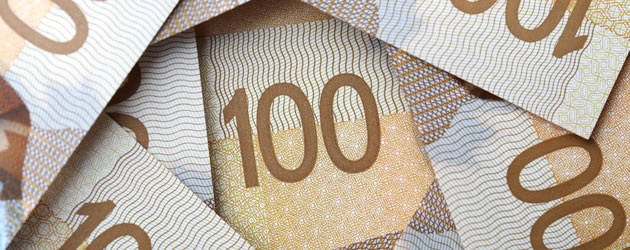Pound Sterling Canadian Dollar (GBP/CAD) Exchange Rate Falls on OPEC+’s Decision
The Pound Sterling Canadian Dollar (GBP/CAD) exchange rate edged around -0.2% lower. This left the pairing trading at around CA$1.6965.
The oil-sensitive ‘Loonie’ was able to edge higher on Thursday despite OPEC+ agreeing to taper record supply cuts from August.
Although, this fall was largely offset by hopes for a jump in demand from the USA after a large fall in US crude stocks.
OPEC and its allies have been cutting output by 9.7 million barrels per day since May, but from next month cuts will taper down to 7.7 million bpd until December.
Commenting on this, chief analyst at Fujitomi Co, Kazuhiko Saito noted:
‘Some investors took profits after the OPEC+ decision, but a big draw in U.S. crude provided some support.’
Sterling (GBP) Struggles on Unwelcome Sign From China
The Pound struggled to make gains on Thursday as risk aversion weighed on markets, which boosted the safe-haven US Dollar (USD).
Upbeat Chinese growth data failed to lift sentiment thanks to the fifth consecutive slump in Chinese retail sales. This was an unwelcome sign ahead for the rest of the world as countries continue to relax lockdown measures.
GBP suffered losses against the Canadian Dollar despite the slump in the job market easing in June. Britain’s unemployment rate held steady at 3.9% in May.
However, the most recent data did not include the slew of job losses caused by the coronavirus crisis.
According to Rony Nehme, chief market analyst at financial research firm Squared Financial:
‘We still believe going forward the UK faces issues and think the economy will fare worse than others in Europe.’
Data from June showed that the number of employees on payrolls had fallen by around -649,000 between April and June.
Added to this, job vacancies slumped, showing further signs of weakness. In the three months to June, vacancies tumbled to the lowest level since the series began in 2001.
Bank of Canada (BoC) Leaves Rates Unchanged
Meanwhile, the Bank of Canada (BoC) left exchange rate on hold on Wednesday, which continued to weigh on CAD.
In the bank’s most extensive set of forecasts since the beginning of the year, policymakers notes the rebound from the coronavirus crisis had been strong.
However, the BoC also noted that it would be a long time before the economy recovered to pre-coronavirus levels.
The quarterly Monetary Policy Report said:
‘The Bank of Canada expects a sharp rebound in economic activity in the reopening phase of the recovery, followed by a more prolonged recuperation phase, which will be uneven across regions and sectors.
‘As a result, Canada’s economic output will likely take some time to return to its pre-Covid-19 level. Many workers and businesses can expect to face an extended period of difficulty.’
Following the decision, in a press conference, Governor Tiff Macklem noted:
‘The reality is […] the virus is going to be with us for some time […] in the central scenario for the full projection period of about two years. Through this period we are going to have to continue to physically distance […] There is also going to be ongoing uncertainty about employment. Some companies unfortunately will go bankrupt. They’re not going to make it to the other side of this.’
Pound Canadian Dollar Outlook: Will Employment Data Buoy the ‘Loonie’?
Looking ahead to this afternoon, the Canadian Dollar (CAD) could edge higher against the Pound (GBP) following the latest employment change data.
If more jobs are added to the Canadian economy than expected, it will boost the ‘Loonie’.
Meanwhile, Sterling could slump further following the release of the latest UK flash consumer confidence.
If GfK’s data reveals confidence has not picked up as much as expected, it will weigh on GBP sentiment. This will send the Pound Canadian Dollar (GBP/CAD) exchange rate lower.


Comments are closed.